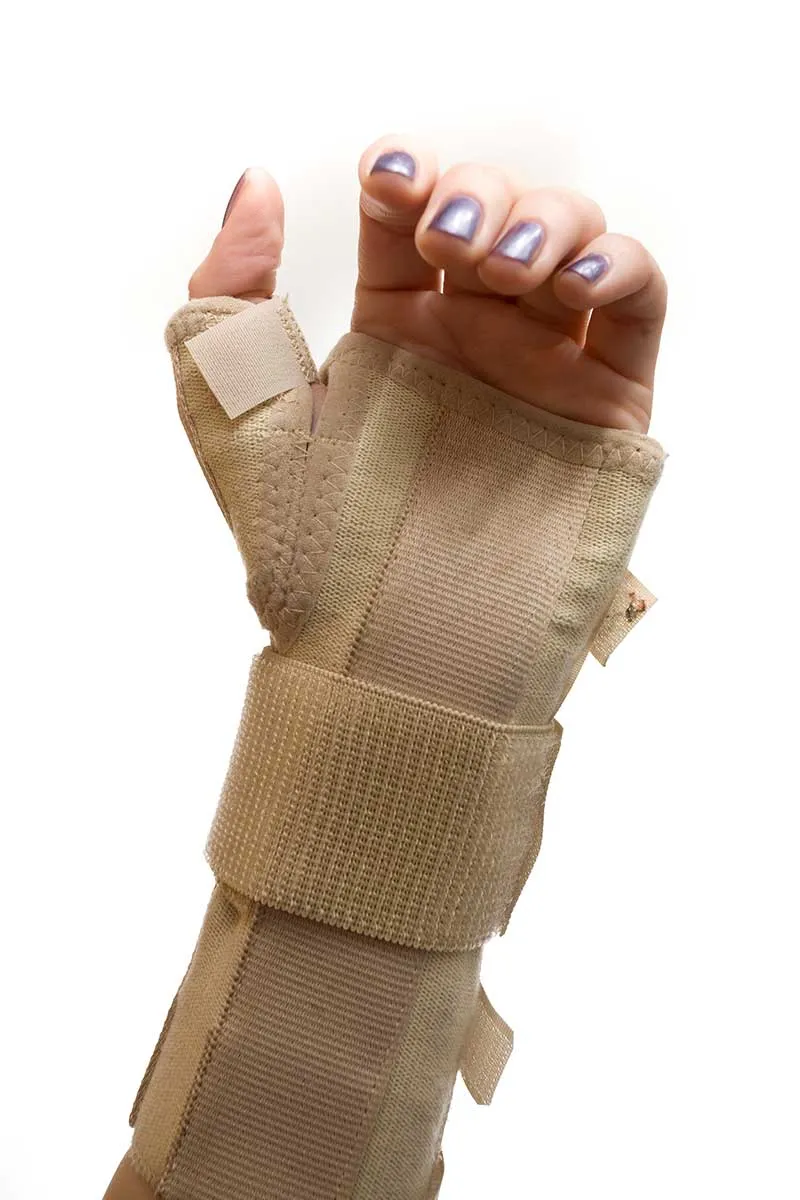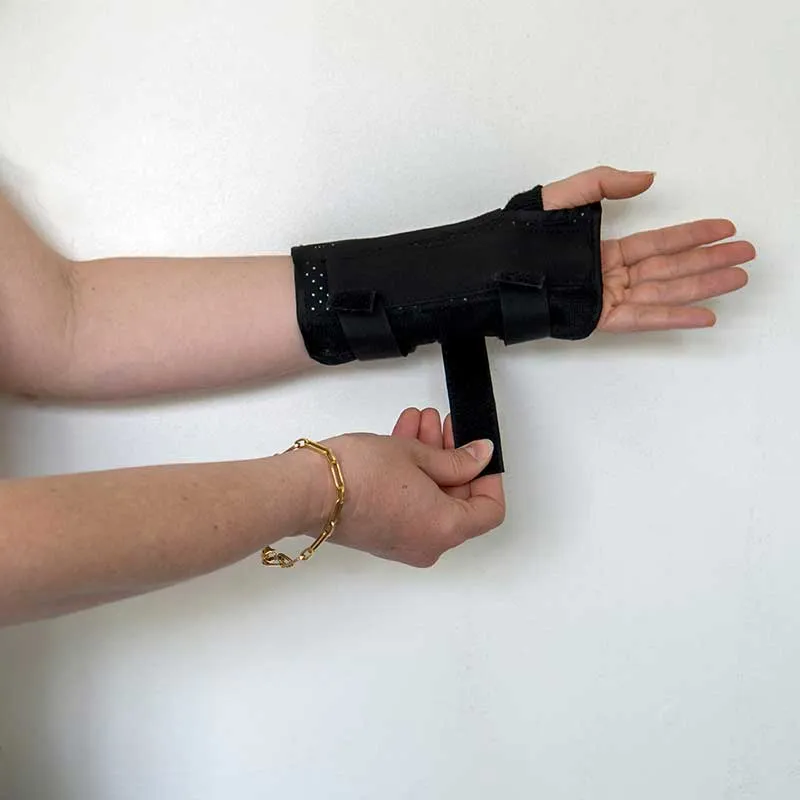
Carpal tunnel syndrome is a condition that causes pain, numbness, and tingling in the thumb, index finger, middle finger and sometimes the ring finger (but not the little finger). It is caused by pressure on the median nerve, which runs through the carpal tunnel, a narrow tunnel in the palmar side of the central wrist. The median nerve provides sensation to the thumb, index finger, middle finger, and half of the ring finger. It also controls the muscles that move the thumb, for example the muscles used to make a tight ring between the thumb and little finger.

Carpal tunnel syndrome can affect people of all ages, but it is most common in adults over the age of 50. It is also more common in women than in men. People who are at increased risk of developing carpal tunnel syndrome include those who:
Participate in activities that involve repetitive hand movements, such as typing, using a computer mouse, using vibrating tools such as a pneumatic hammer, or playing musical instruments
Have diabetes
Are pregnant
Have a history of wrist injuries
Have certain medical conditions, such as rheumatoid arthritis or hypothyroidism

The main symptoms of carpal tunnel syndrome are:
The symptoms of carpal tunnel syndrome may be worse at night or when the wrist is bent for long periods of time.

Carpal tunnel syndrome is usually diagnosed based on a physical exam and the patient's medical history. The doctor will ask about the patient's symptoms and activities. The doctor will also examine the hand and wrist for pain, numbness, weakness and range of motion limitations. In extreme cases it may be possible to see wasting of the muscles around the thumb. Nerve conduction studies and electromyography (EMG) may be ordered to confirm the diagnosis. These tests measure the electrical activity of the median nerve and the muscles it controls. Under ultrasound assessment the doctor can clearly see the median nerve and using the ultrasound probe to apply pressure to the nerve, the clinician can try to reproduce the tingling and pain into the hand which provides further evidence of a Carpal Tunnel Syndrome diagnosis.

Treatment for carpal tunnel syndrome depends on the severity of the condition. Non-surgical treatments are often effective. Non-surgical treatments may include:

Corticosteroid injections can be a highly effective way of reducing inflammation and pain as a result of median nerve irritation with carpal tunnel syndrome. At The Joint Injection Clinic, corticosteroid injections are performed after a thorough consent process, whereby the risk and benefits of the procedure are discussed in detail with your doctor. The experienced medical doctor will then place you in a seated position with the wrist palm up, resting on the couch. The palm side of the wrist is cleaned using a cleaning solution to ensure that the procedure is performed under sterile conditions. The median nerve injection is performed with a small dose of steroid, targeting the area surrounding the nerve (perineural tissue), being careful to avoid injecting into the nerve itself.
The injection itself is normally completed within 30-60 seconds, after which a plaster is applied and post-injection advice is given. The patient is advised to look out for any signs of infection, specifically to check whether the local area becomes red, hot, tender, swollen or if they develop a fever. If this occurs then the patient is asked to contact the clinic immediately at which time a formal reassessment will occur and if needed oral antibiotics can be prescribed. The patient is also warned that following any injection they may notice a short-term worsening or flare in their symptoms after the local anaesthetic has worn off (4-5 hours). This may last for 3-5 days and the patient is advised to consider icing of the area using an ice pack for 10-15 minutes every hour as required.
If non-surgical treatments are not effective, surgery may be an option. Surgery for carpal tunnel syndrome is a minimally invasive procedure that involves cutting the ligament that forms the roof of the carpal tunnel and widening the tunnel to create more space for the nerve.

Additional tips for managing carpal tunnel syndrome pain:
If you are experiencing pain, numbness, or tingling in your hand and fingers, it is important to see a doctor to get a diagnosis and discuss treatment options. With early diagnosis and treatment, most people with carpal tunnel syndrome can manage their symptoms and maintain a good quality of life.
Carpal tunnel surgery is typically a quick, outpatient procedure lasting 15 to 30 minutes. However, at The Joint Injection Clinic in London, we focus on non-surgical treatments such as ultrasound-guided steroid injections, which can often reduce inflammation and relieve symptoms without the need for surgery.
Most cases can be managed effectively with conservative options, including rest, splinting, and guided injections. Surgery is only considered if these methods fail over time. At our clinic, we aim to avoid invasive procedures where possible and can guide you through the most appropriate non-surgical care.
Yes, symptoms can return over time, especially if underlying causes like repetitive strain or diabetes aren’t managed. However, many patients experience months or even years of relief after a single injection. If symptoms do recur, a second injection or alternative treatment like wrist splinting may be considered. Our team can help develop a long-term management plan tailored to your needs.
You can usually drive within 24 hours after a carpal tunnel injection, once the numbness from the local anaesthetic has worn off and your grip strength feels stable. We advise avoiding driving the same day of the injection, especially if you experience discomfort or drowsiness. Always follow the aftercare instructions provided by your doctor.
You can book a private steroid injection for carpal tunnel syndrome at Joint Injection Clinic, based in London. We offer quick access, often with same-week appointments, and all procedures are carried out by experienced doctors using ultrasound guidance to ensure precision and safety. Ideal for patients who want to avoid NHS waiting lists and get back to work or daily life faster.



